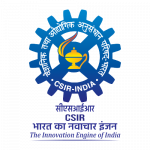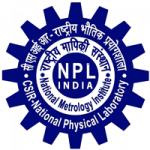
सीएसआईआर-राष्ट्रीय भौतिक प्रयोगशाला
CSIR-National Physical Laboratory

Electromagnetic Metrology
About
Electromagnetic (EM) Metrology at CSIR-NPL comprises of various measurement facilities in frequency range from 1 Hz to 110 GHz of electromagnetic spectrum for devices from household electronic appliances to advanced strategic communication and instrumentation. CSIR-NPL (NMI of the country) provides measurements for microwave frequencies from 9 kHz to 110 GHz frequency range that are precise, accurate, reliable, internationally recognized and traceable to the SI units through Microwave Metrology and Magnetic Metrology. The Microwave and Magnetic based National Standards and measurement capabilities are realized, established, maintained, and upgraded at CSIR-NPL. These standards are disseminated to reference laboratories across India to provide traceability to various sectors: strategic, defence, manufacturers, testing industries, government regulators and research institutions. Electromagnetic metrology at CSIR-NPL has a unique combination of comprehensive capabilities of various parameters of Electromagnetics such as attenuation, microwave power, E-Field and specific absorption rate (SAR), Magnetic flux Density, Magnetic flux, turn area of search coil, power loss measurement of electrical steel, along with various free space measurements parameters. Upcoming 5G technology is not just a routine technological change but a platform to enable several smart technologies such as smart banking, smart city, smart village, smart healthcare smart automobile and many more. This shows the overall impact of Electromagnetic metrology on country’s upcoming technological needs.
Microwave metrology includes parameters such as attenuation, impedance, insertion loss followed by free space microwave measurements such as Electric Filed, SAR, Shielding effectiveness, and dielectric measurements along with advanced Quantum E-Field measurements traceable to Plank Constant. Each parameter have their associated primary standards, their calibration and measurement capabilities (CMCs) and their degree of equivalence with the leading NMIs of the world, and associated on-going research for advanced measurements including quantum standards.
Microwave Metrology
Microwave Metrology at CSIR-NPL exhibits an international degree of equivalence for various measurement parameters such as Microwave Power, Attenuation, Impedance, E-Field, Shielding Effectiveness, Radiated power density, Specific Absorption Rate in the frequency range from 9 kHz to 50 GHz with fifteen registered CMC’s and seven international inter-comparisons. Microwave Metrology also engages in Dielectric Material characterization (ε and σ) for Lossy Liquids and biological materials by using commercial open ended Dielectric probe, along with VNA (ZNB 8), for frequencies up to 6 GHz as recommended in IEEE-1528 2013 standard. However, the IEEE-1528:2013 standard, is now superseded by the new IEEE/IEC-62209 1528: 2020 standard, which has made few advancements to measurement methods and standards used.

Design for Fabricated Sample Cell for Liquid Dielectric Materials
Electromagnetic metrology section has already completed a technology transfer for “process-know how for Tissue Equivalent liquids as per IEEE-1528 standard” on Sept 24, 2020. We are working to extend the scope of this by preparation or standard TELs for upcoming 5G frequencies. These TELs are being prepared as per by the new IEEE/IEC-62209 1528: 2020 standard, which require different chemicals from the ones used for previous studies.

Vector SAR measurement system, NPL has partnered with EURAMET consortium for development of calibration methods for probe calibration of time domain probes and arrays for vector SAR measurement systems. These probe measure simultaneous amplitude and phase at much faster rate than the existing SAR measurement systems/probes. A Specific Absorption Rate (SAR) evaluation system is indigenously developed by CSIR- NPL. In this setup E-Field Sensor, Tissue equivalent liquid, Robotic automation (Robotic arm procured from epson) and a controlled GUI are being indigenously developed. The system is capable to evaluate SAR upto 3W/kg with an expanded uncertainty of ±0.15W/kg per 1.6W/kg
Center For Rydberg Atom Based Quantum Measurements
CSIR-National Physical Laboratory (CSIR-NPL) being a National Metrological Institute (NMI) of India has the responsibility to realize all the physical measurements in terms of SI units or physical constants and accordingly update the related calibration facilities. Since metrology provides backbone to almost all technologies, establishment of primary standards are necessarily required for technological and hence economic growth of the country. In the field of electromagnetic measurement, the accuracy of the order of µV/m in the measurement of E-field amplitude have not been achieved using the classical antennas or E-field probes. Also, calibration of conventional E-field probes follows something like a chicken-and-egg dilemma i.e., to calibrate the probe, you need a reference electric field whose values are accurately known. But to have a known field, you need a calibrated probe. This need for calibration limits accuracy and increases errors.
In contrast, this primary standard facility utilizes the properties Rydberg atoms whose outermost electrons in very high orbits act as highly sensitive electric probes. In this technique, two counter-propagating probe and coupling laser beams of different wavelengths interact in a vapor cell containing Rydberg atoms of Rubidium. Because of quantum-mechanical interaction and related effects, the atoms become transparent to the probe beam giving rise to EIT signal. But when an electric field from a radiofrequency (RF) wave is applied to the atoms along with the laser fields, the transmission spectra spectrum of the probe beam changes and this change is directly proportional to the applied electric field. This sensor would be self-calibrated or provide traceability to the universal Planck constants because of invariance of the atomic parameters. The developed single sensor system can be able to calibrate all the RF antennas working in the entire range starting from few MHz to 300 GHz with better reliability and sensitivity than the present standards.
AIM
Establishment of primary standard for amplitude, phase, polarization and power measurement of RF E-field. In addition to it, a novel technique to determine the direction of incoming radio frequency field will also be established for increasing the accuracy of radar and wireless communication signals.
Objectives
Measurement of RF E-field polarization, amplitude and power by exploiting the Rydberg states of alkali atom using radio frequency field that will cause Autler-Townes splitting of EIT peak has been realized
Determination of phase and angle of arrival of incident RF field using Rydberg atoms is in progress
Establishment of wireless communication and radar systems in the ultra-violet range utilizing angle of arrival of incident RF field in near future
Key Papers
- HS Rawat, SK Dubey, VN Ojha. Distinction between double electromagnetically induced transparency and double Autler–Townes splitting in RF-driven four-level ladder 87Rb atomic vapor. J. Phys. B: At. Opt. Phys. July 6, 2018. DOI 10.1088/1361-6455/aacdd9
- Harish Singh Rawat, Satya Kesh Dubey, and Vijay Narain Ojha. Polarization dependence of interferences inside rubidium atomic vapor governing microwave vector E-field metrology. J. Opt. Soc. Am. 2019. DOI 10.1364/JOSAB.36.003547
- Monika, Harish Singh Rawat & Satya Kesh Dubey. RF E-field Sensing Using Rydberg Atom-Based Microwave Electrometry. MAPAN, 2020. DOI 10.1007/s12647-020-00404-2
Magnetic Metrology
This section is responsible for maintaining and upgrading National Standard related to the magnetic parameter like Magnetic flux Density, Magnetic flux, turn area of search coil, power loss measurement of electrical steel, through continuous development and providing calibration/test services (as per ISO/IEC: 17025 guidelines) to more than 100 customers (MSME sectors, Large scale industries, Govt. organizations and R&D institutes like Indian Air Force, Air India, Power Grid, CPRI, IDEMI, ERTL, ETDC, ABB, Siemens, Samsung, GE Healthcare, L&T, Adani power, Genus Power, Secure Meters etc.) to improve the quality infrastructure of India.
 Available Facilities
Available Facilities
- Scalar RF reflection coefficient and attenuation: reflection coefficient in waveguide5.8 GHz to 18 GHz
- Vector/ Scalar RF reflection coefficient and attenuation: VSWR in coaxial line 1 MHz to 50 GHz
- Scalar RF reflection coefficient and attenuation: attenuation in coaxial lineupto 40 GHz
- Scalar RF reflection coefficient and attenuation: attenuation in coaxial line: 1 MHz to 40 GHz
- Scalar RF reflection coefficient and attenuation: attenuation in waveguide from 5.8 GHz to 18 GHz
- E- Field Measurements Upto 3 GHz
- Low magnetic field measurement facility (AC/DC): 1 to 2000 μT (expanded uncertainty 1.6-0.5 %).
- AC magnetic field measurement setup: range 10 mG to 20 G (50 Hz).
- Magnetic flux measurement of range 0.0001-10 weber with uncertainty of ±0.005 to 0.15 %.
- Cesium magnetometer: measuring magnetic field of Nano tesla range i.e., 10000-1 nT.
- Epstein frame setup: measurement of parameters of electrical steel strips such as specific power loss, peak value of magnetic polarization, and peak value of magnetic field strength .
- VSM (Vibrating sample magnetometer): magnetic characterization of materials (system under maintenance).
- MPMS (magnetic properties measuring system):Measures magnetic properties of materials i.e., Magnetic moment: magnetization, susceptibility (T=1.8–400 K & B=0–7 T).
Calibration and Test Facilities Available
- Calibration of permanent Magnet
- Calibration of AC/DC Gaussmeter
- Calibration of Magnetic field indicator
- Calibration of low field magnetometer
- Calibration of Helmholtz Coil
- Calibration of Fluxmeter
- Calibration of Turn area of search coil
- Testing of AC/DC electromagnet
- Power loss measurement of Electrical Steel
- Magnetic Radiation Measurement
The second major activity of our group is actively involved in research on Magnetic materials, Multiferroic materials, Spintronic, Magneto Resistance materials for development of magnetic sensor.
Research Activities
- Materials R & D for Magnetic Metrological Applications.
- R & D on Magneto resistance based Material.
- Thin Film Preparation by RF Sputtering & Spin Coater Facility.
Team
- Dr. Ashish Agarwal
Sr. Principal Scientist & Professor (AcSIR) - Dr. Satyakesh Dubey
Principal Scientist - Dr. Alok Prakash
Scientist - Mr. Anurag Kr. Katiyar
Technical Assistant - Mr. Mange Ram
Sr. Technician-II - Mrs. Manno
Work Assistant
Contact
Dr. Satyakesh Dubey
Principal Scientist & Associate Professor (AcSIR)
Division: Indian Standard Time
Section: Electromagnetic Metrology Section
Email: dubeysk@nplindia.org
Phone: +91-011-45609313
All Rights Reserved - The Official Website of CSIR-National Physical Laboratory, CSIR, under Ministry of S & T, Govt. of India
Site Designed & Managed by Knowledge Resource Centre
CSIR-NPL, New Delhi
India